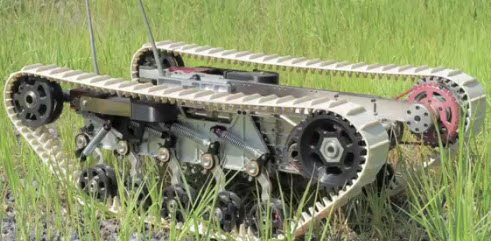The use of ground robots in military explosive-ordinance-disposal missions already saves many lives and prevents thousands of other casualties. If the current limitations on mobility and manipulation capabilities of robots can be overcome, robots could potentially assist warfighters across a greater range of missions. DARPA’s Maximum Mobility and Manipulation (M3) program seeks to create and demonstrate significant scientific and engineering advances in robot mobility and manipulation capabilities.
This video shows a modified iRobot 510 PackBot equipped with an advanced suspension system maneuvering on a test course.
The compliant suspension improves the robot’s mobility over rough and uneven terrain. The technological enhancement enables faster transit speeds, climbing of very steep slopes, improved heading control, greater accommodation of debris entering the suspension and reduced impact forces on carried payloads.
M3 is a research program aimed at improving robot capabilities through fundamentally new approaches to the engineering of better design tools, fabrication methods and control algorithms. The program covers scientific advancement across four parallel tracks: design tools, fabrication methodologies, control methods and technology-demonstration prototypes. The prototypes demonstrated are designed to test technological advances in robotics across a range of functions, and are not necessarily intended to enter production for military use.
The DARPA M3 performer for the Advanced Suspension for Improved Mobility system is iRobot of Bedford, Mass.










